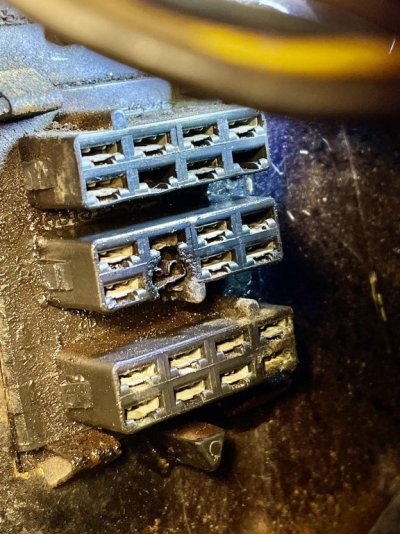Swanky
New Member

66 300 is bricked due to a typically fried bulkhead connector. I have ordered a replacement.
Before I start this job, I want some info please.
1) I have read people say this must be done inside the car, under the dash, and others say you can pull it into the engine compartment and do it that way. Anyone know for sure what the answer is for my car?
2) Various people said they did this switch in an hour, which gives me great hope. Is that realistic?
3) I don't know what the back side of this looks like. Is there a wire connector for each "slot" and I pull the wires from the old and put them in the new, being careful to put them in the right spots? Should I do anything as I do this like spray with contact cleaner, etc.?
4) The plugs on the engine side are not melted and I intend to put them back. Cleaning them out of course, but I have read folks talk about sanding the connector prongs first. Should I be doing that?
5) I read about dielectric grease, but not sure what to do. I thought it was conductive, but it is not. I know it prevents corrosion, but I assume the entire prong needs to contact the female as well as possible and that grease would impede that. What do I do with dielectric grease here. Everything says apply is lightly, but do I bother?
6) I worry, from other posts, that the plugs may be loose after I pried them off and maybe the plastic side tabs will be loose. Any way to tighten them back up? Replacing those plugs looks like a whole world of work I have no idea how to do.
Thanks!
-Tim

















